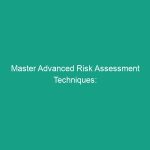Introduction
Good morning team! Today, we’re going to talk about an essential topic that impacts our Safety every day: 3 Types of Poor Housekeeping Hazards You Must Avoid for Safety. Maintaining a clean and organized workspace is not just about aesthetics; it’s crucial for our health, safety, and overall productivity. Poor housekeeping can lead to serious accidents, injuries, and even fatalities. So let’s dive into why this is important and how we can ensure our workplace remains safe.
Understanding Poor Housekeeping Hazards
Poor housekeeping refers to a lack of cleanliness and organization in the workplace, which can lead to various hazards. This includes cluttered work areas, spills, and inadequate waste disposal. Addressing these hazards is vital because they can significantly impact our daily operations and safety. For example, did you know that slips, trips, and falls are among the leading causes of workplace injuries? Understanding and recognizing poor housekeeping hazards can help us prevent these incidents from occurring.
Many employees might think that housekeeping is someone else’s responsibility or that it’s not a priority during busy workdays. However, maintaining a clean Environment is everyone’s duty, and it plays a significant role in ensuring our collective safety.
Key Hazards, Risks, and Safety Considerations
Let’s examine the three primary types of poor housekeeping hazards:
- 1. Cluttered Work Areas: Excess items in workspaces can obstruct walkways, making it easier to trip or fall. Clutter can also impede access to emergency exits and equipment.
- 2. Spills and Wet Surfaces: Whether it’s water, oil, or chemicals, spills create slippery surfaces that can lead to serious accidents if not promptly cleaned up.
- 3. Improper Waste Disposal: Failing to dispose of waste correctly can lead to fire hazards, pest infestations, and health risks. This includes not recycling materials that should be recycled.
Ignoring these hazards can have real-world consequences, such as injuries that may require medical treatment, lost time from work, or worse. By recognizing these hazards, we can take proactive steps to mitigate the risks.
Best Practices, Procedures, & Actionable Advice
Now that we understand the types of poor housekeeping hazards, let’s discuss how to avoid them:
1. Keeping Work Areas Organized
- Assign specific areas for tools and materials to ensure everything has a place.
- Conduct regular inspections to identify and remove clutter.
- Encourage all employees to tidy their workspaces at the end of each shift.
2. Managing Spills and Wet Surfaces
- Promptly clean up any spills using appropriate materials and methods.
- Use warning signs to alert others to wet areas until they are dry.
- Implement a regular Maintenance schedule for equipment that may leak.
3. Proper Waste Management
- Set up designated waste disposal areas, ensuring they are easily accessible.
- Educate employees on the importance of recycling and proper waste segregation.
- Conduct regular waste audits to ensure waste is being disposed of correctly.
Incorporating these Best Practices into our daily routines can significantly improve our Workplace Safety and prevent accidents. For instance, consider the case of a warehouse that implemented a strict housekeeping schedule. They saw a 30% reduction in slip and fall incidents over six months! This demonstrates the impact that proper housekeeping can have on safety.
Regulations, Standards, and Compliance
It’s crucial to understand that there are Regulations governing Workplace Safety, including those related to housekeeping. The Occupational Safety and Health Administration (OSHA) mandates that all employers maintain a clean workplace to ensure employee safety. Compliance with these regulations is not just a legal obligation but a moral one, as it protects our health and well-being.
Ensuring compliance can help prevent accidents and protect the organization from potential fines and legal issues. It’s essential to remain informed about the latest safety Standards and to participate in regular Training sessions on these topics.
Employee Engagement & Discussion
Now that we’ve discussed these hazards and Best Practices, I’d like to open the floor for discussion. What safety challenges have you encountered related to housekeeping? Have you noticed any areas that require improvement? Your insights are invaluable in creating a safer work environment.
Conclusion & Key Takeaways
In conclusion, we’ve covered the three types of poor housekeeping hazards you must avoid for safety: cluttered work areas, spills, and improper waste disposal. Remember that maintaining a clean workplace is everyone’s responsibility. By applying the best practices we discussed, we can create a safer environment for ourselves and our colleagues.
Let’s commit to prioritizing safety and cleanliness in our workplace. Thank you all for your attention and for your commitment to making our work environment a safer place!


